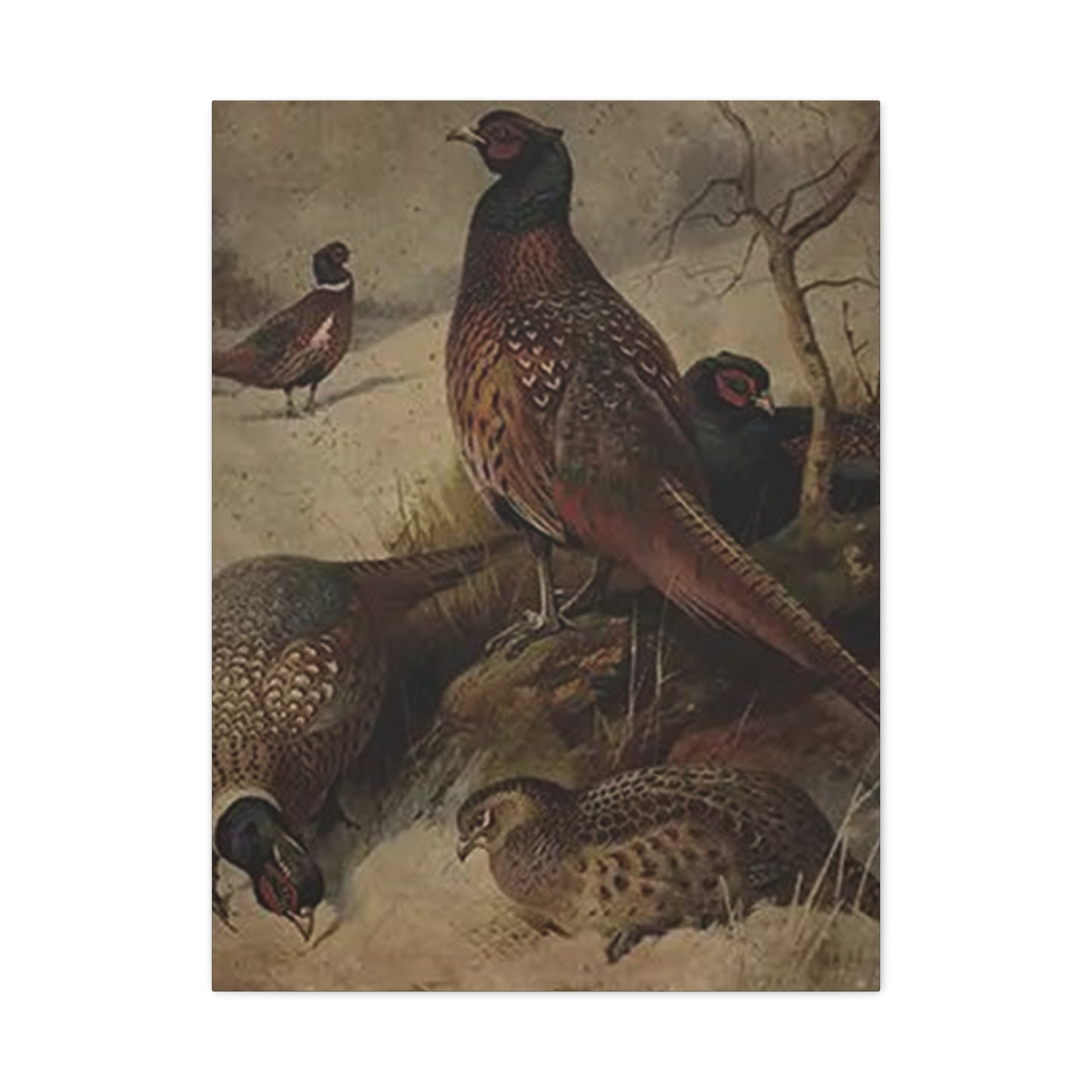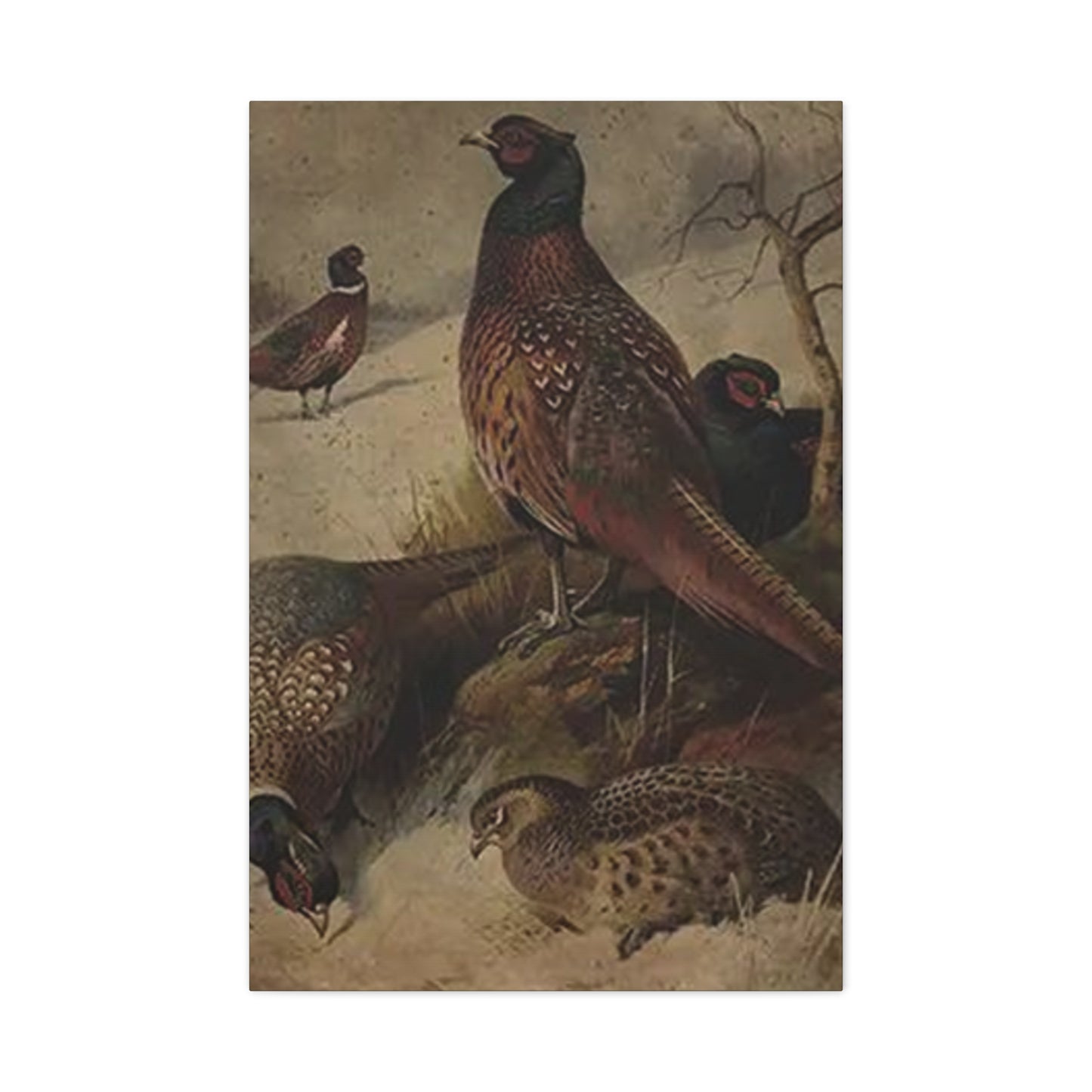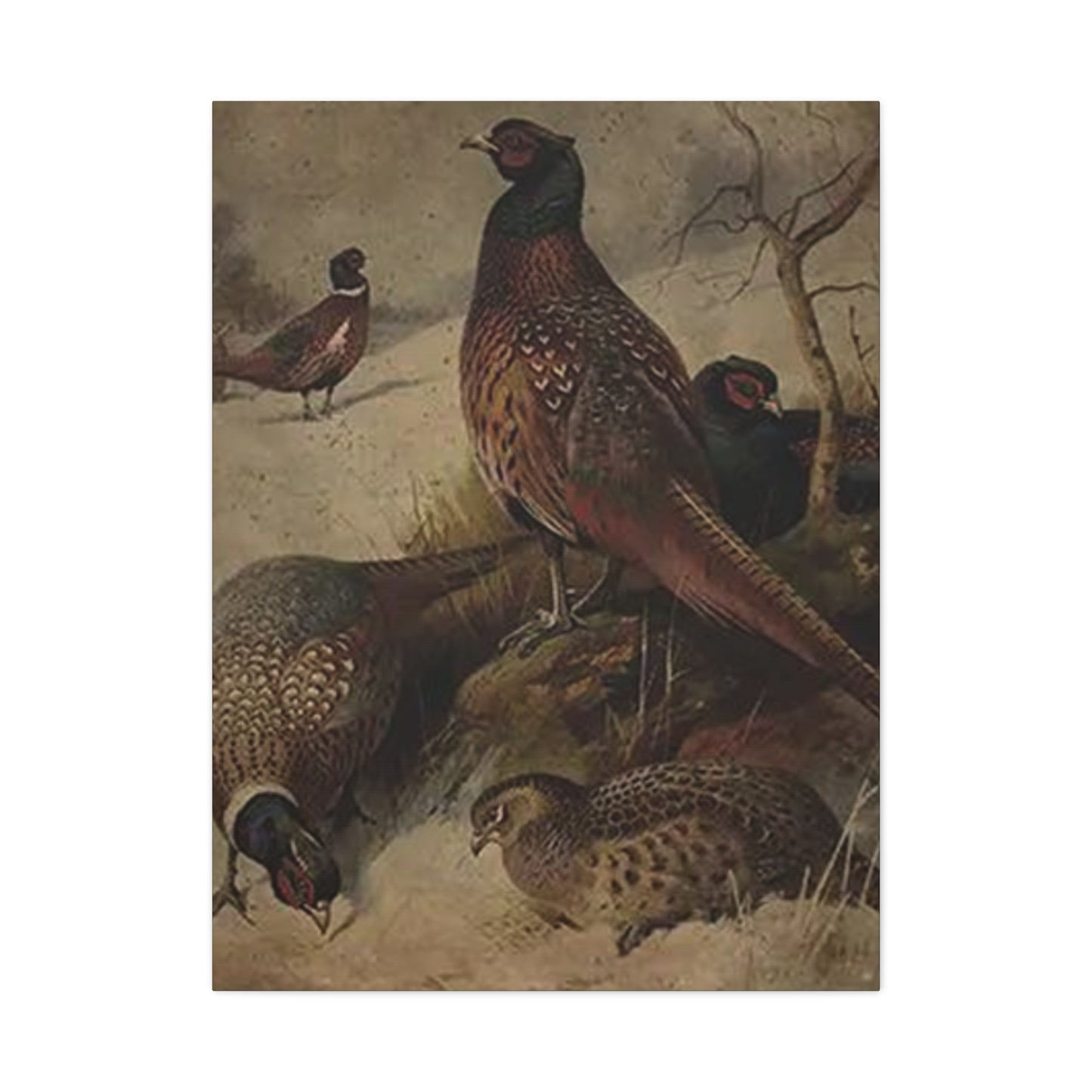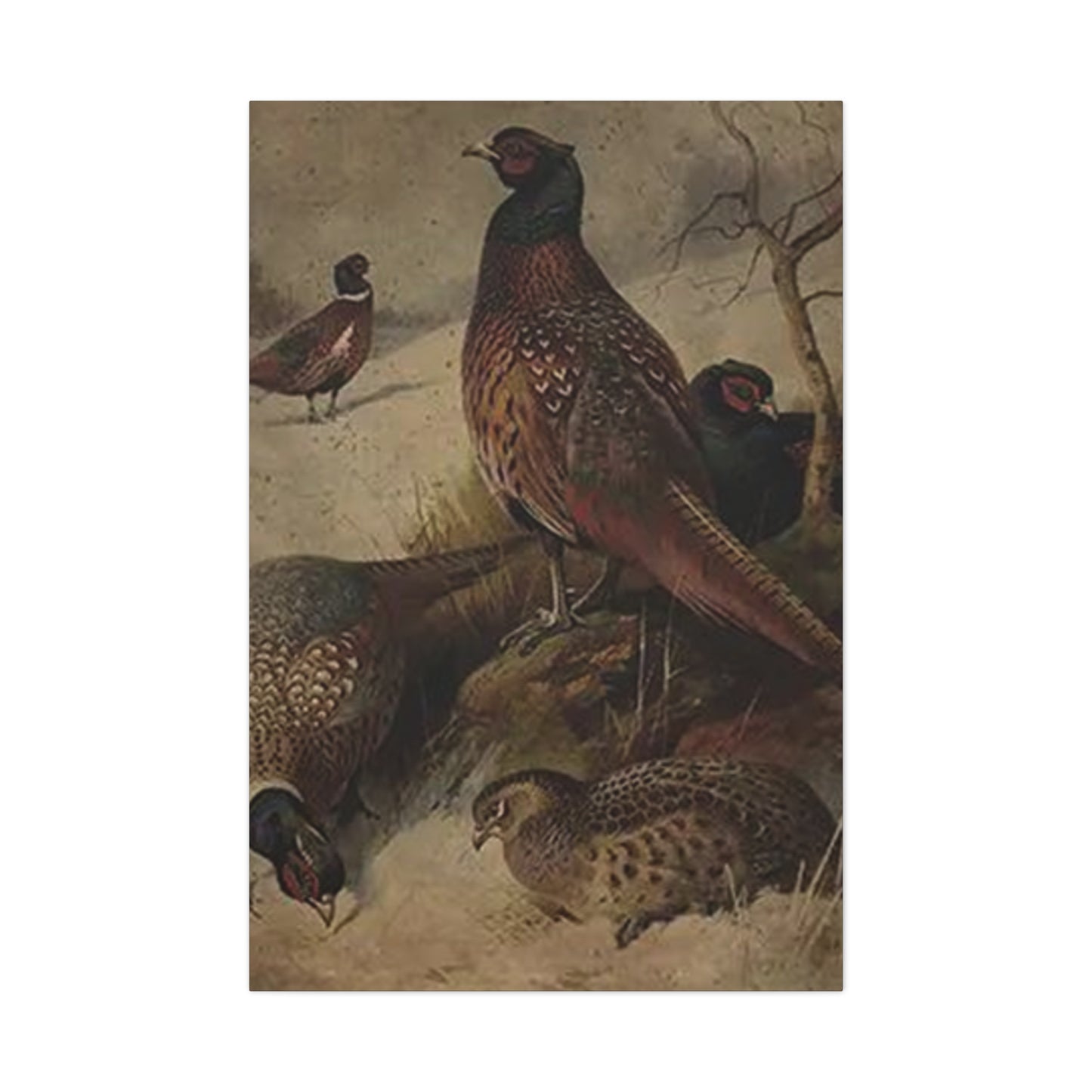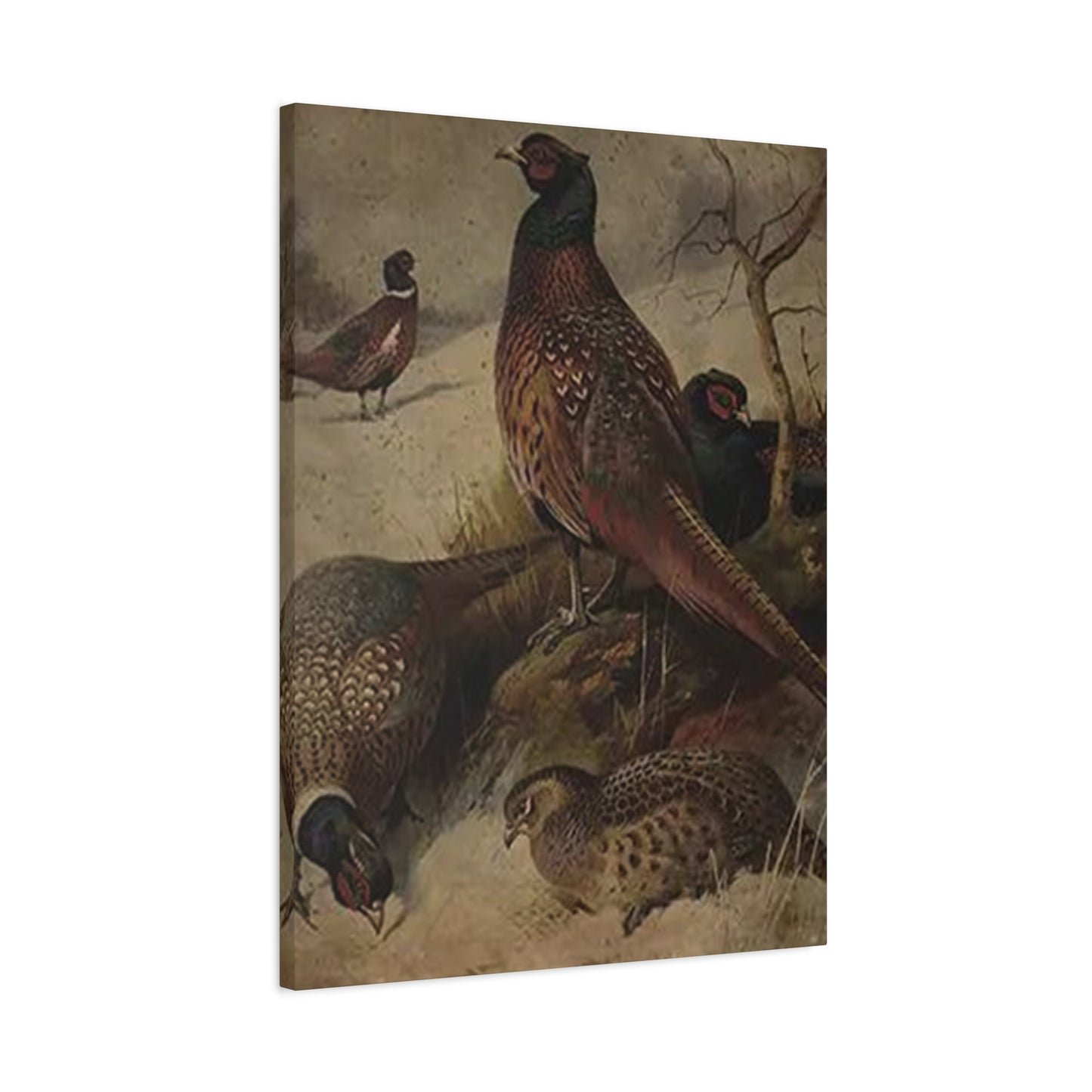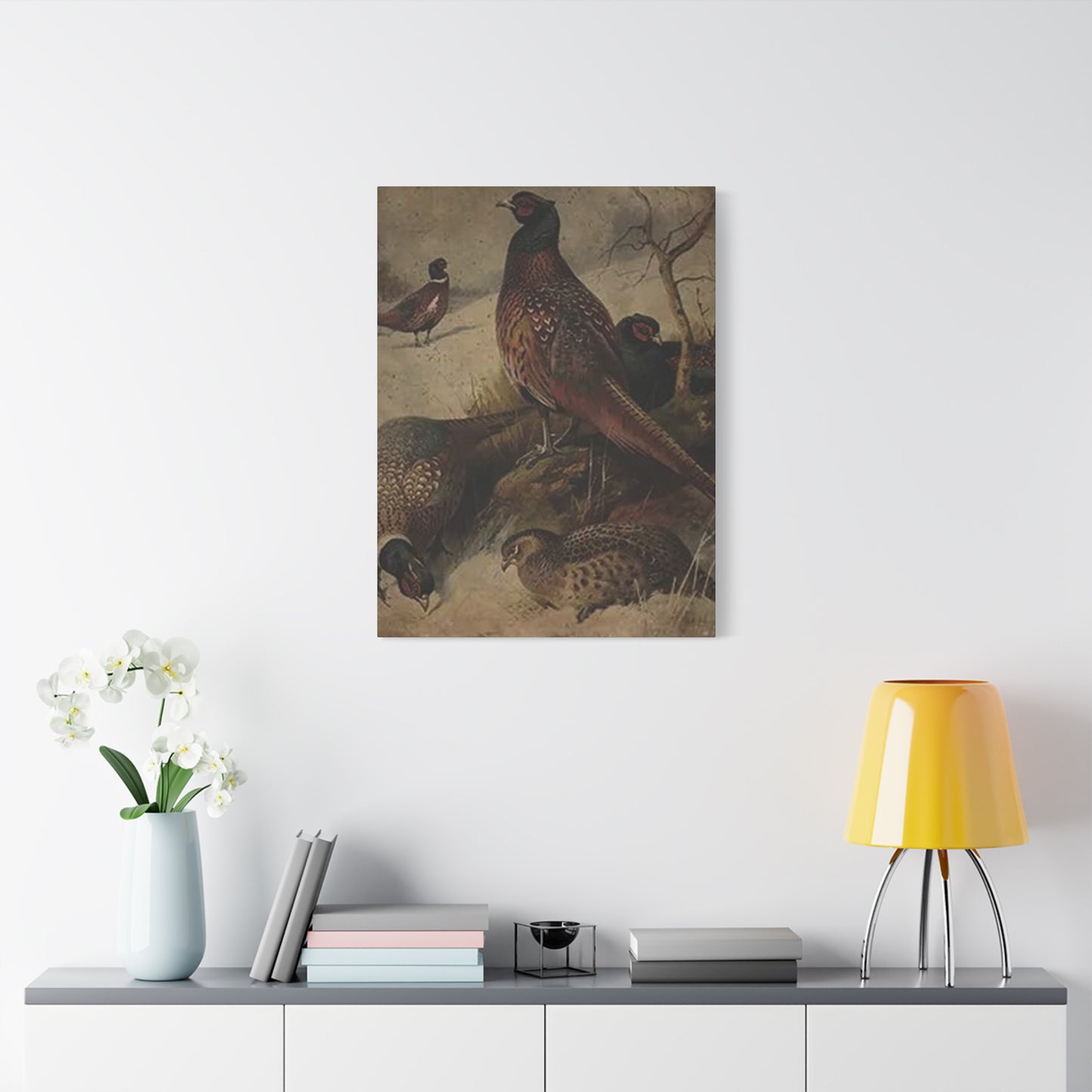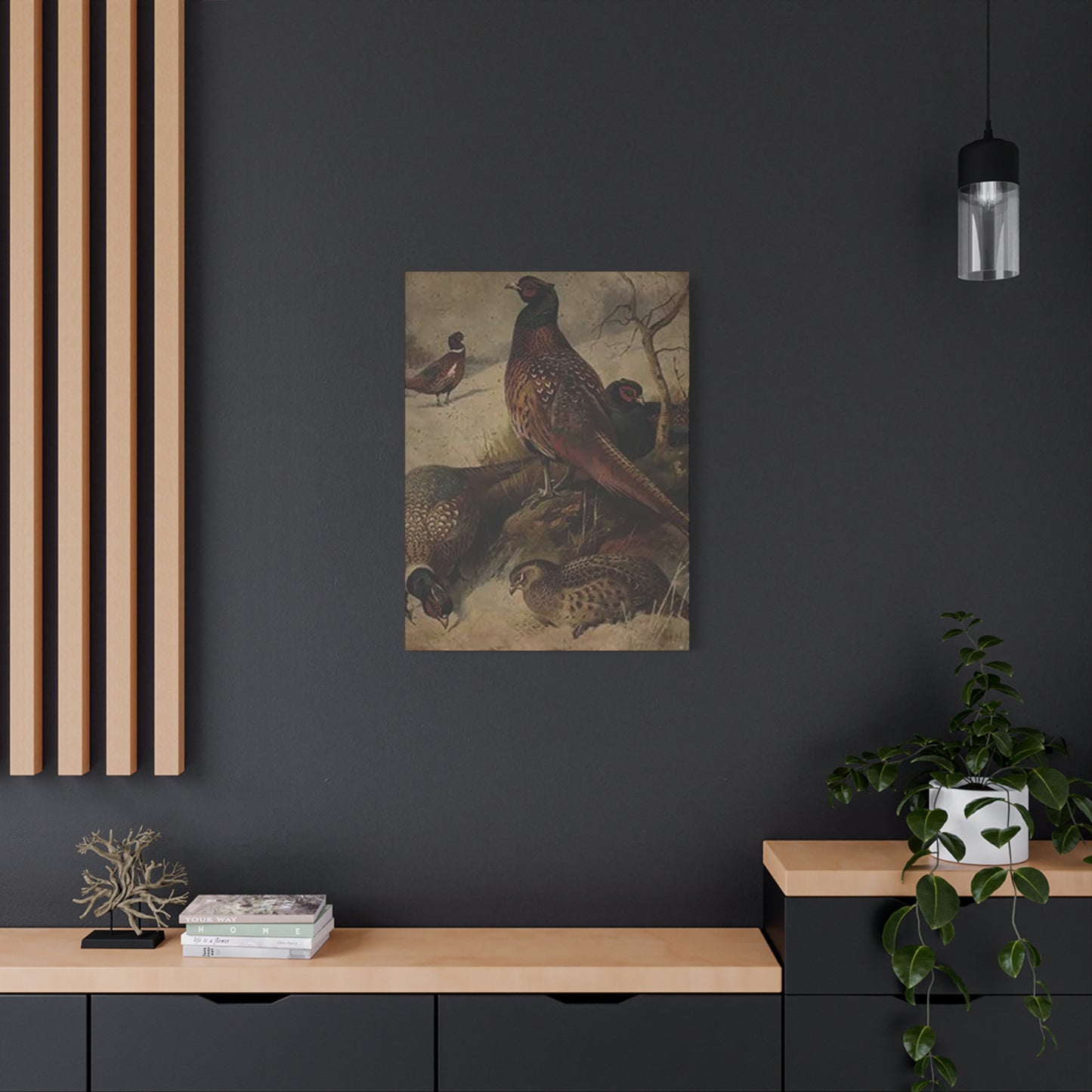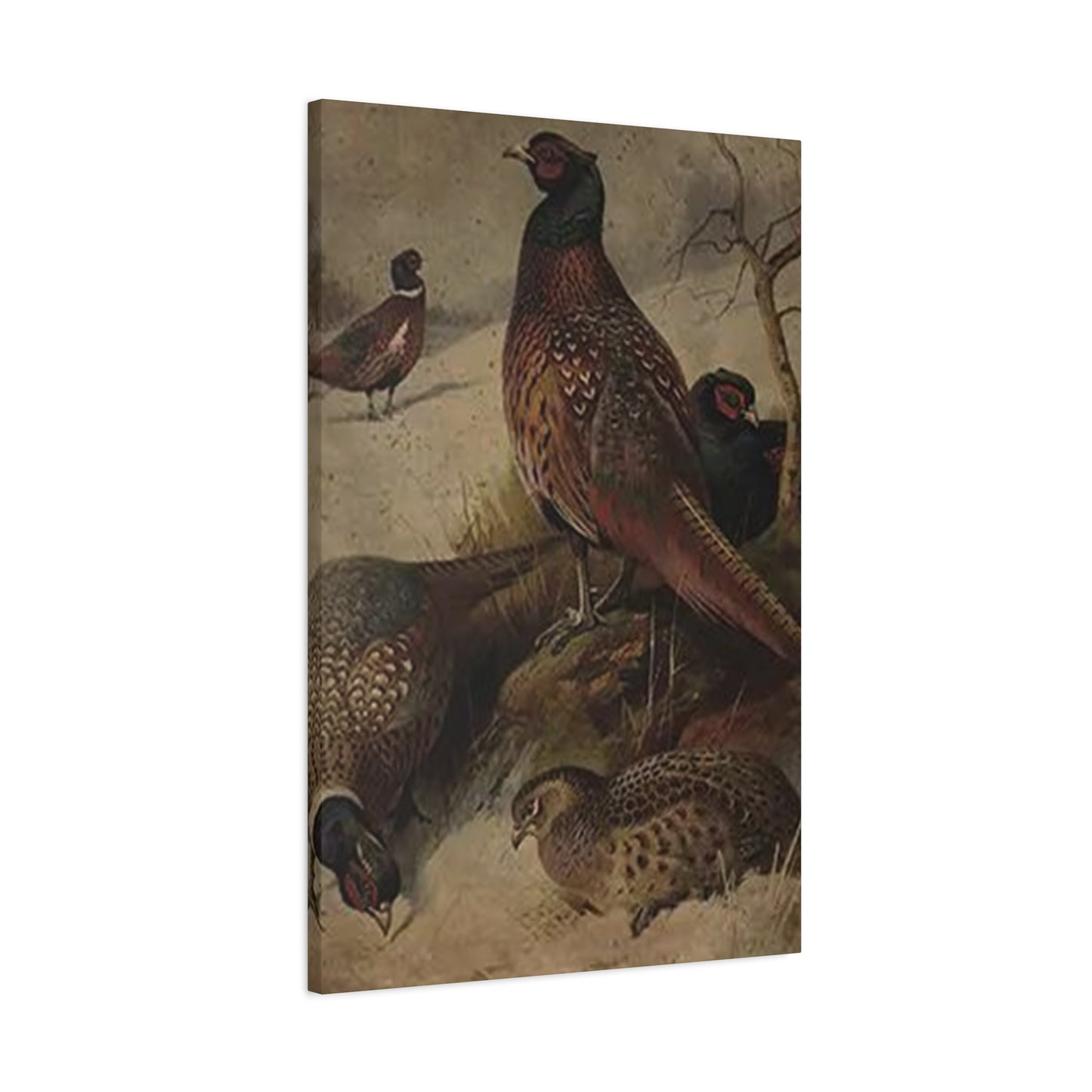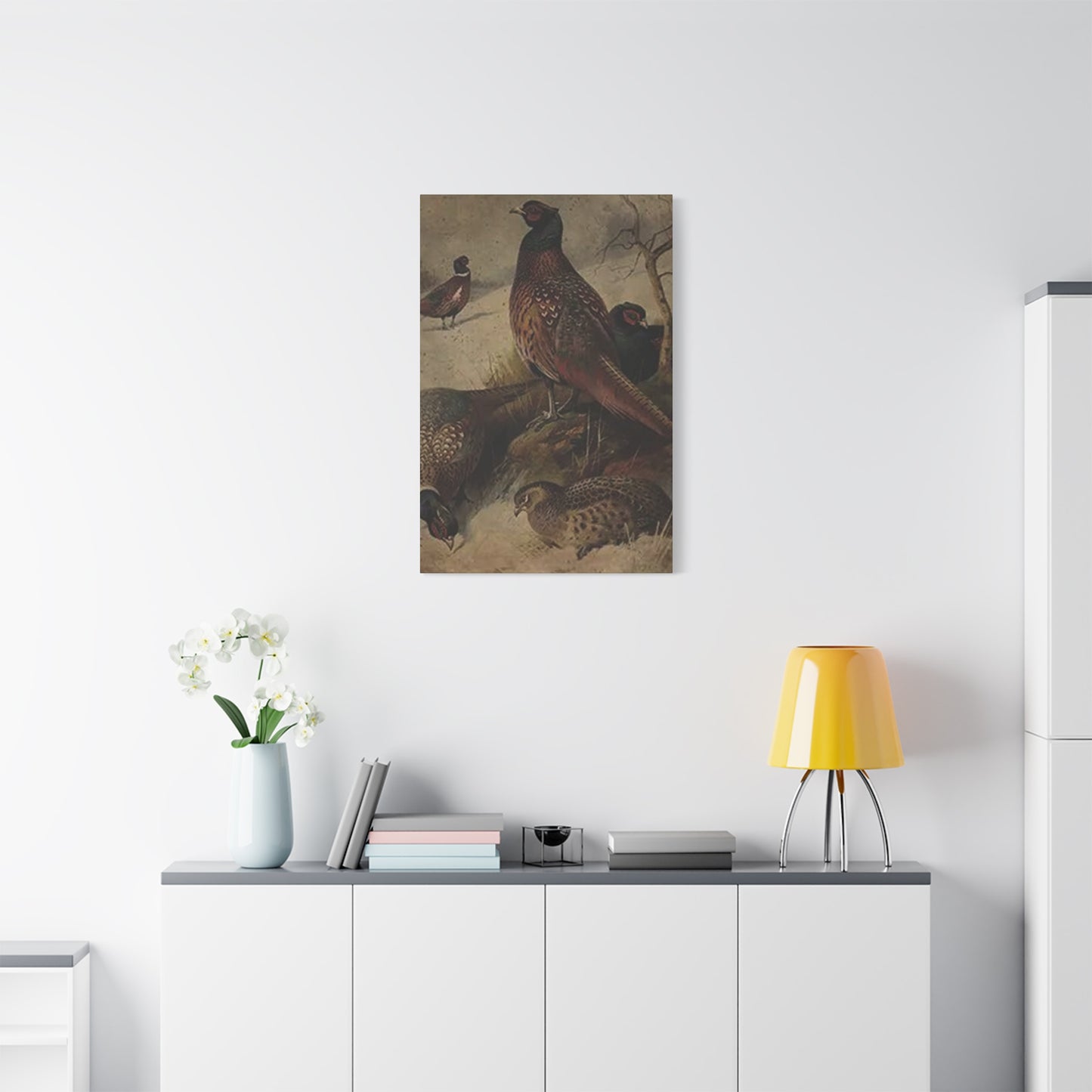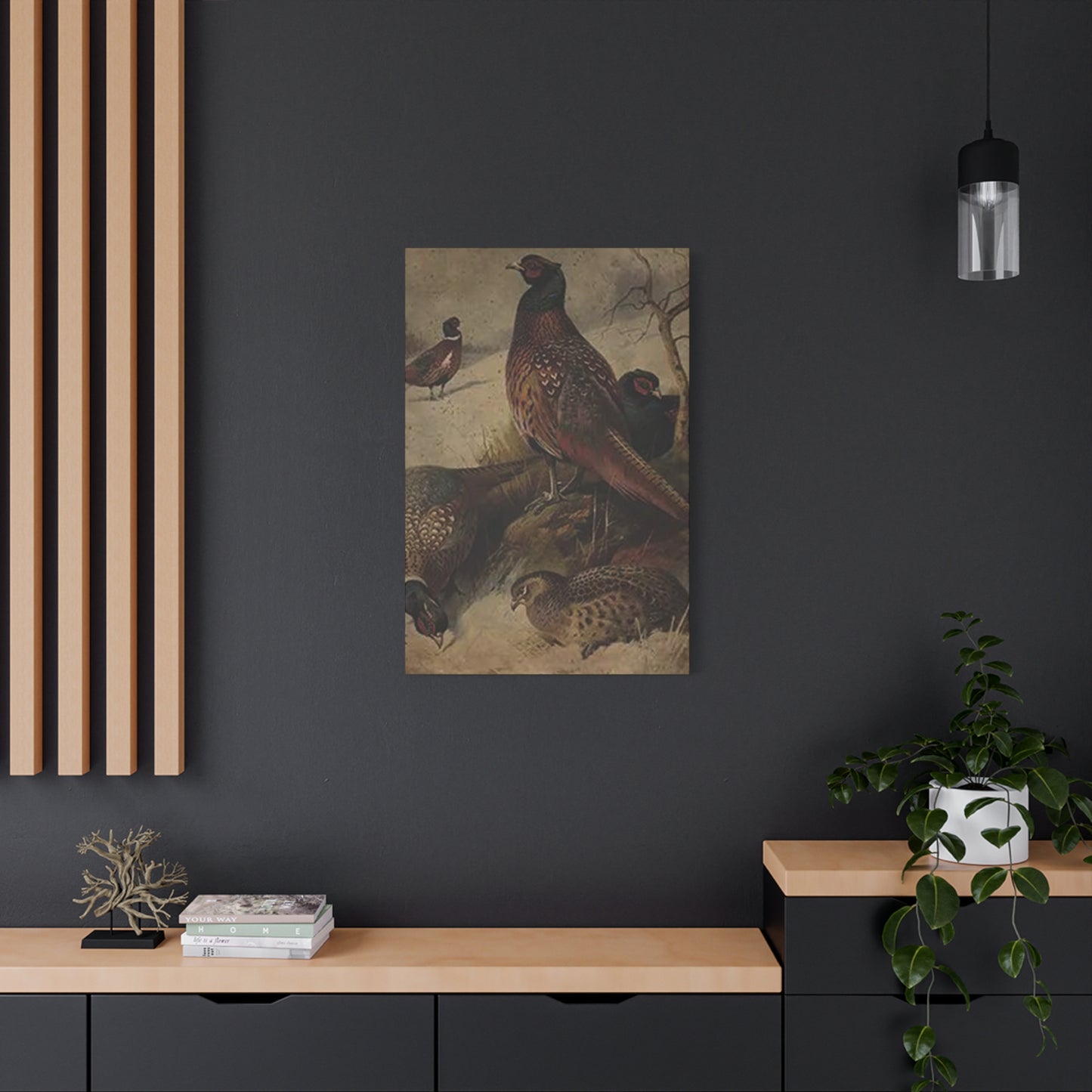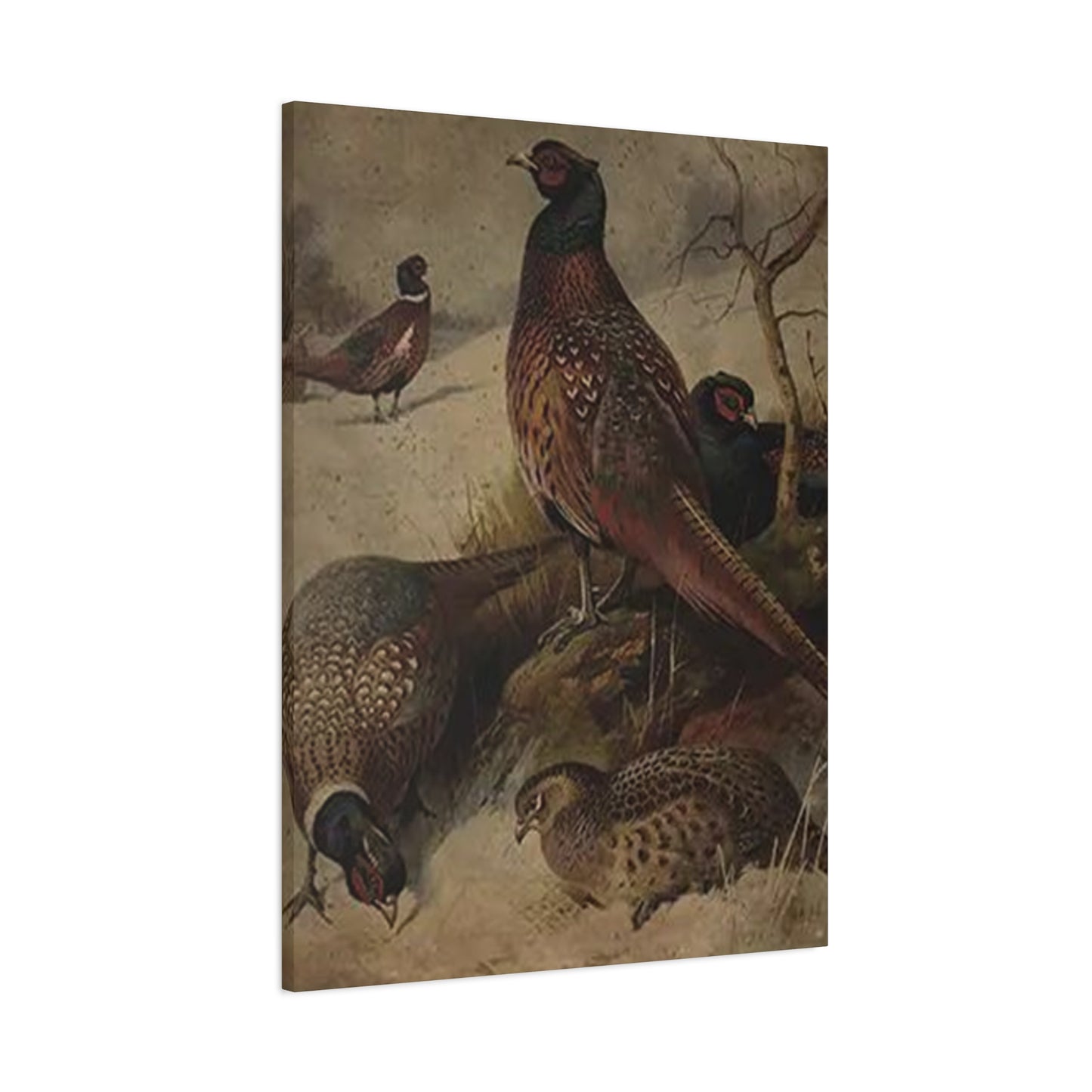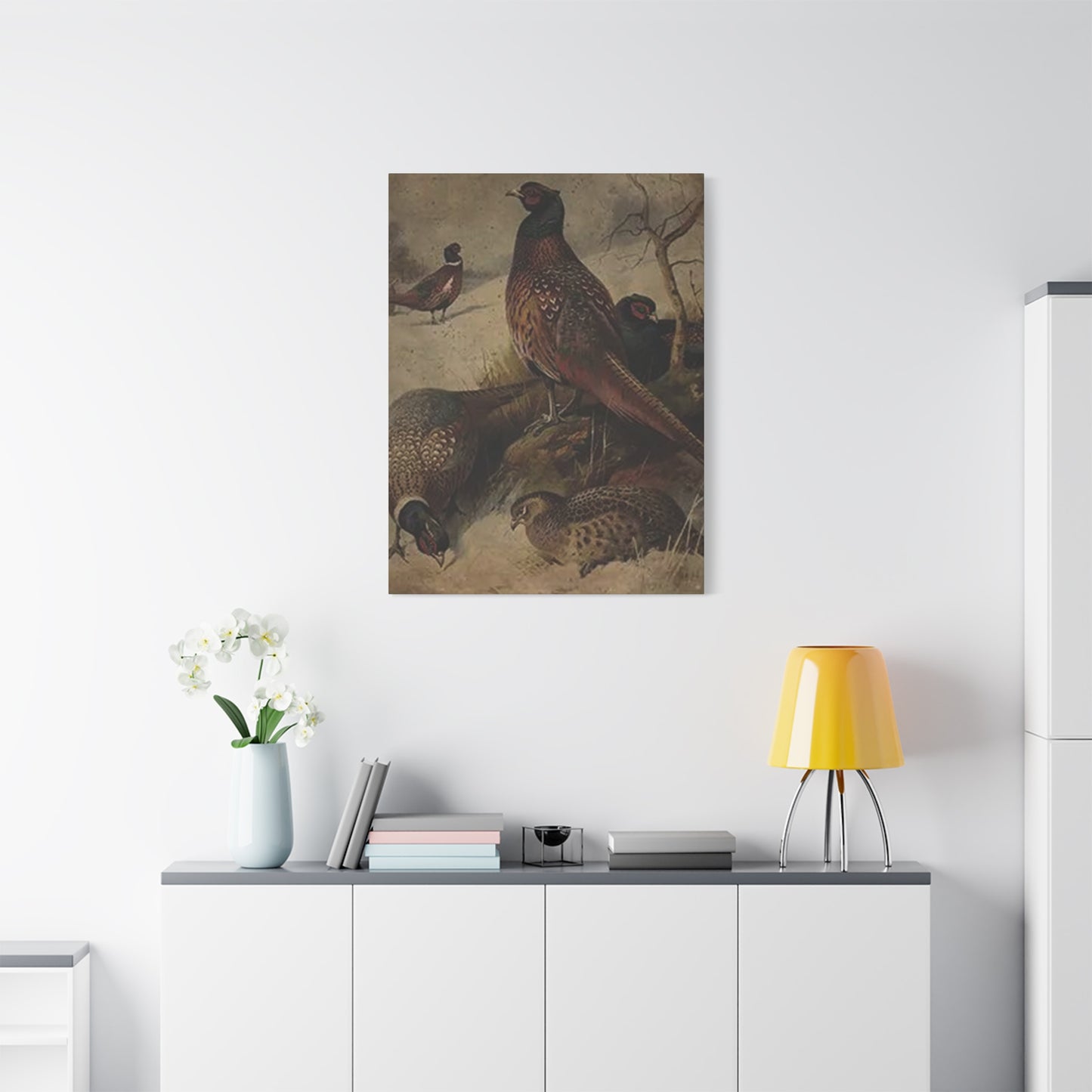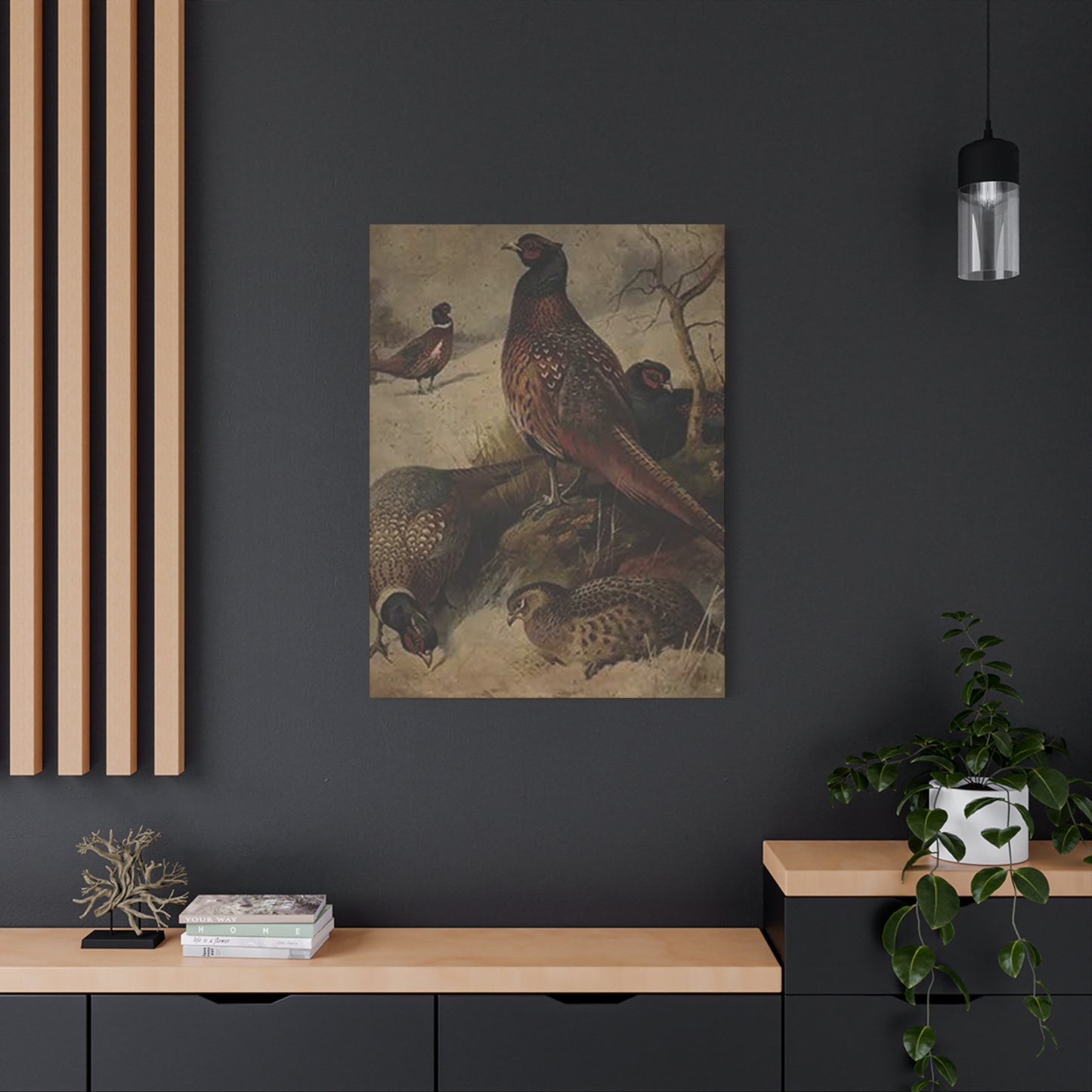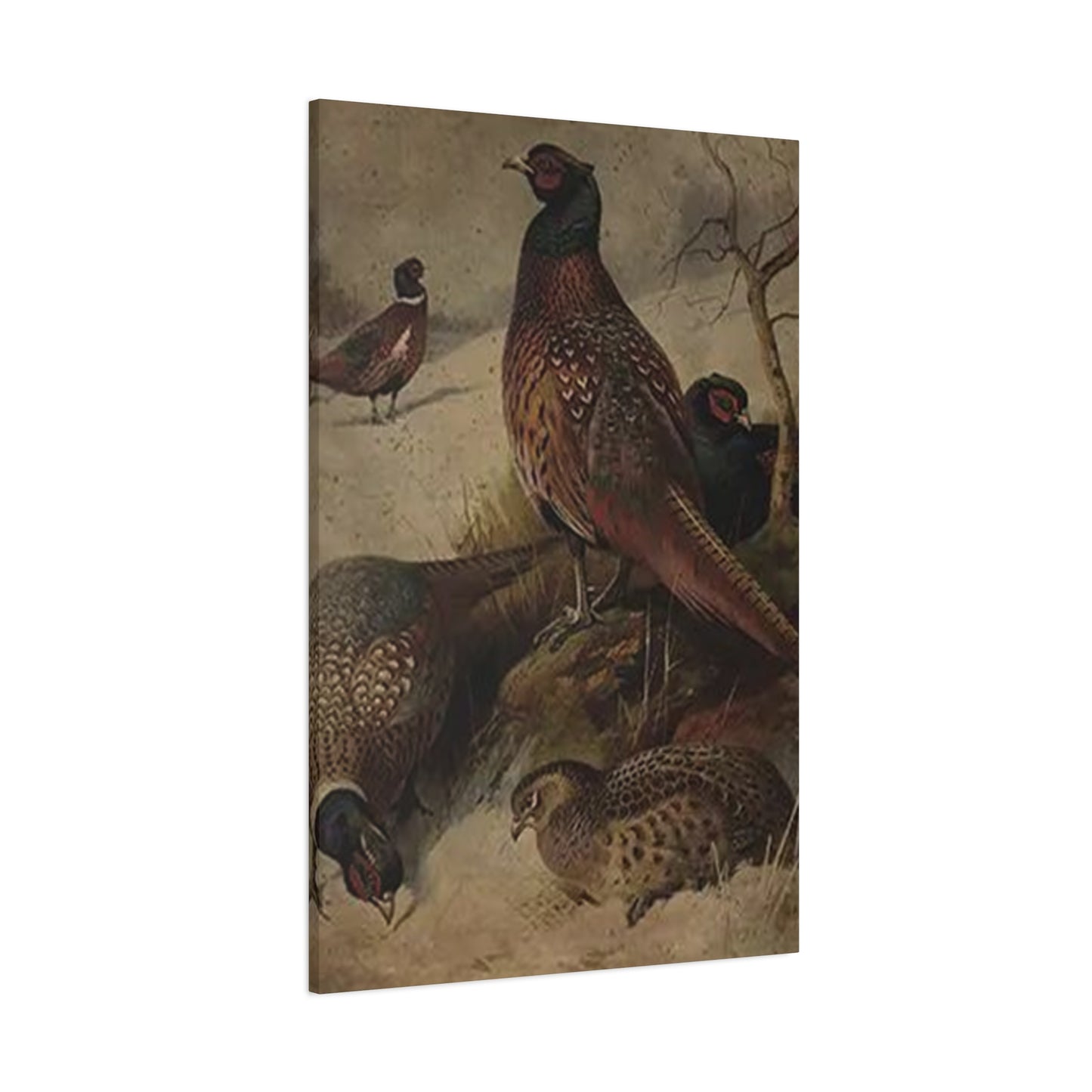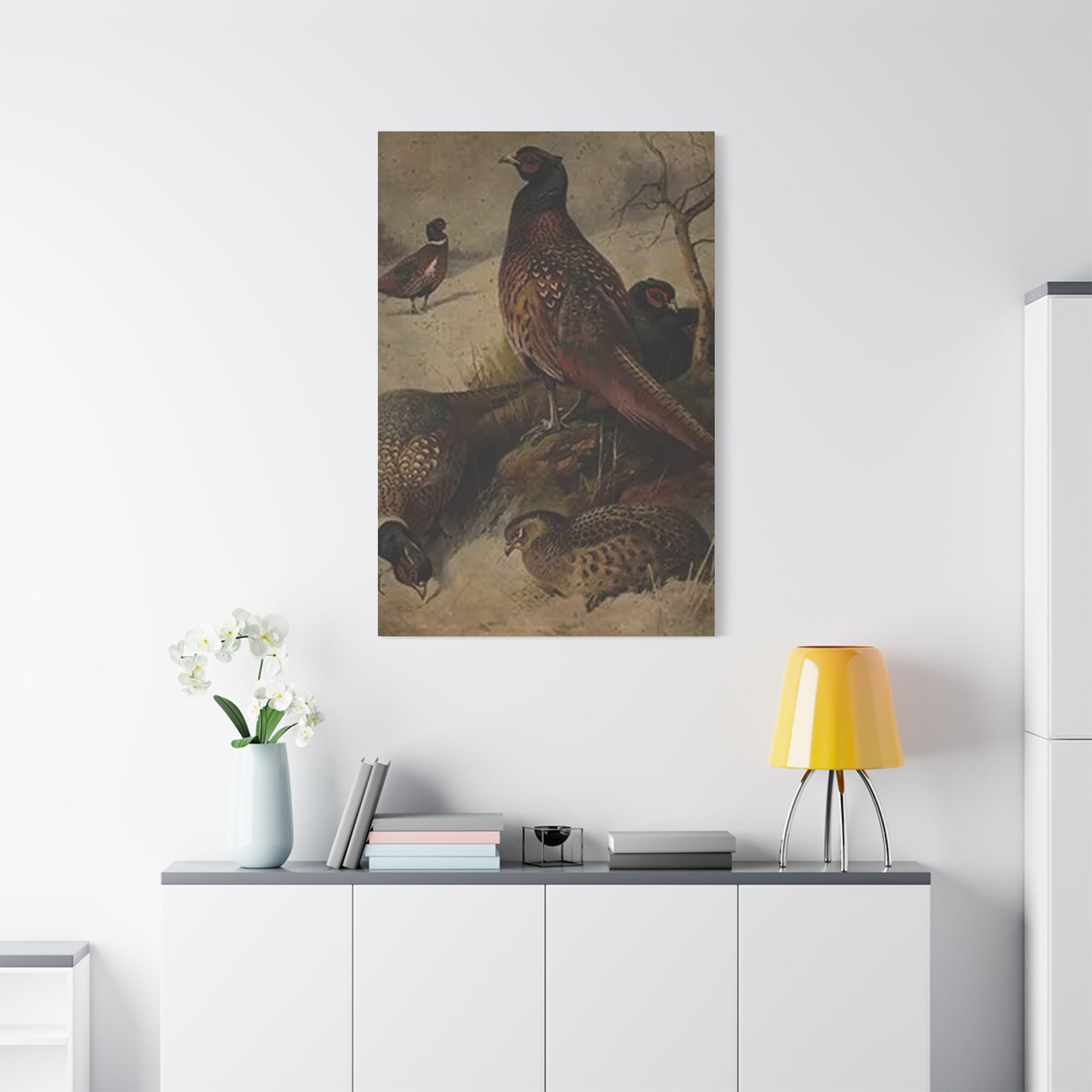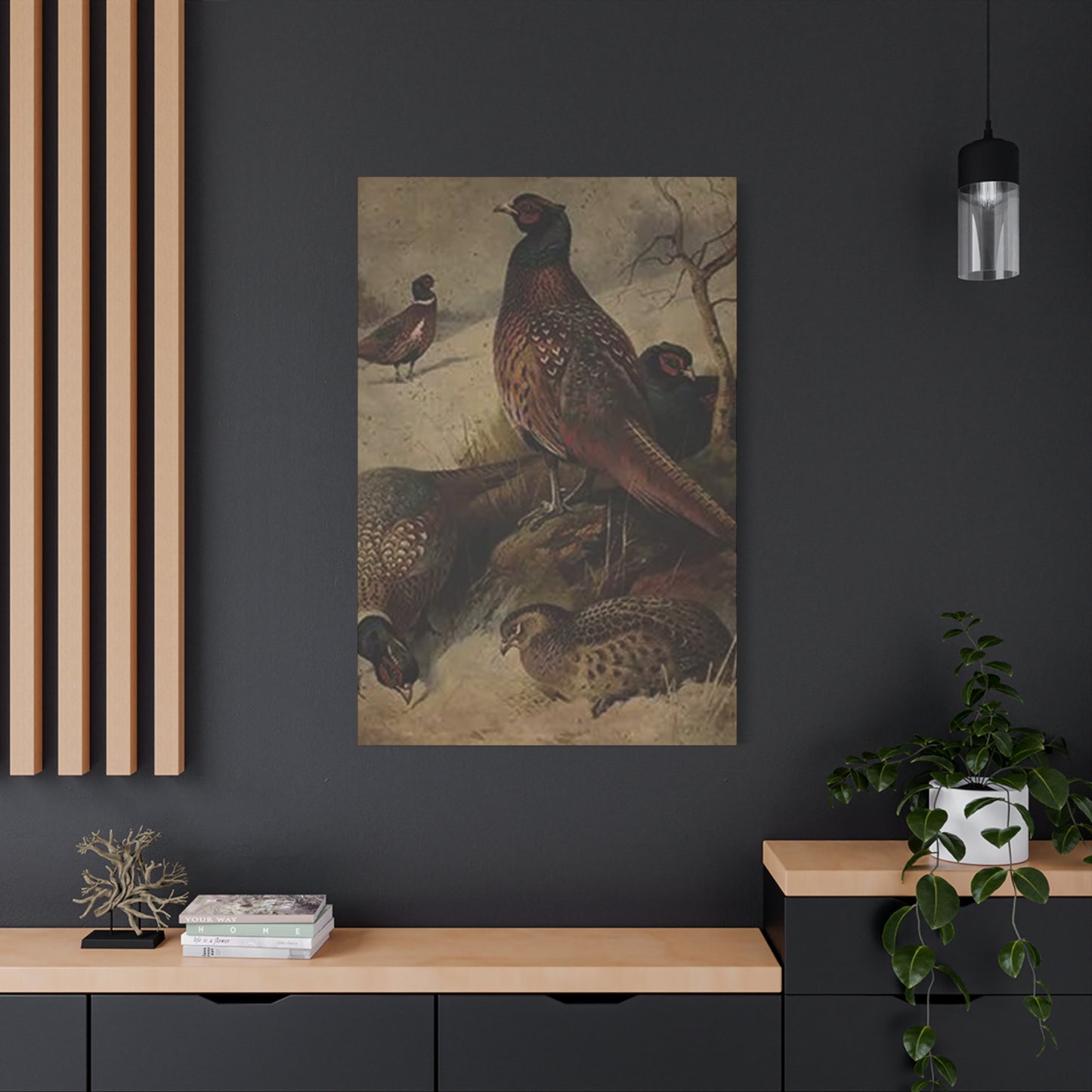Hunting Lodge Vibes: How to Create the Perfect Rustic Space with Pheasant poster Wall Art
Decorating interior spaces with artwork that reflects the natural world has become increasingly popular among homeowners, designers, and art enthusiasts. Among the most captivating subjects for wall décor are pheasants, birds known for their striking plumage, elegant forms, and symbolic significance across various cultures. From vibrant canvas prints to minimalist poster designs, pheasant-themed artwork offers versatile options that complement diverse aesthetic preferences and room functions. This extensive exploration delves into the world of bird-inspired wall décor, examining how these magnificent creatures can transform ordinary spaces into extraordinary visual experiences while enhancing the ambiance of homes and offices alike.
The appeal of incorporating avian imagery into interior design stems from humanity's longstanding connection with nature and wildlife. Pheasants, in particular, present a unique combination of visual drama and natural elegance that makes them ideal subjects for artistic representation. Their distinctive appearance, characterized by iridescent feathers, bold color patterns, and graceful postures, translates beautifully into various artistic mediums and styles. Whether rendered in photorealistic detail, stylized abstraction, or contemporary graphic design, these birds bring a sense of vitality and sophistication to any environment.
Understanding the various approaches to displaying bird-themed artwork requires consideration of multiple factors including room dimensions, existing décor schemes, lighting conditions, and personal aesthetic preferences. The versatility of pheasant imagery allows for seamless integration into traditional, modern, rustic, and eclectic interior design themes. From intimate bedroom spaces to expansive living areas, from professional office environments to welcoming entryways, the strategic placement of carefully selected artwork can dramatically influence the mood, perceived spaciousness, and overall character of a room.
This comprehensive examination explores numerous aspects of selecting, displaying, and appreciating pheasant-themed wall décor. Through detailed discussions of specific applications, stylistic variations, and practical considerations, readers will gain valuable insights into maximizing the visual impact of their decorating choices while creating cohesive, aesthetically pleasing environments that reflect their personal tastes and lifestyles.
Pheasant Wall Art Posters
Decorative posters featuring these magnificent birds represent an accessible and flexible approach to enhancing interior spaces with nature-inspired imagery. These printed artworks offer exceptional versatility, allowing homeowners to experiment with different compositions, color schemes, and artistic styles without significant financial investment. The poster format accommodates a wide range of sizes, from compact designs suitable for gallery wall arrangements to substantial pieces that command attention as standalone focal points.
The production quality of contemporary printed artwork has advanced considerably, with modern printing technologies delivering remarkable color accuracy, sharp detail, and impressive longevity. High-quality paper stocks, fade-resistant inks, and protective coatings ensure that these decorative pieces maintain their visual appeal over extended periods. Many manufacturers now offer archival-grade options that rival traditional fine art prints in terms of durability and presentation quality.
Selection considerations for poster-style artwork extend beyond mere visual attraction. The relationship between the artwork's dimensions and the wall space it will occupy significantly impacts the overall aesthetic effect. Smaller formats work exceptionally well in groupings, creating dynamic compositions that tell visual stories or establish thematic connections. Larger individual pieces serve as dramatic statements, anchoring room designs and establishing immediate visual interest for anyone entering the space.
The framing options available for poster artwork further expand creative possibilities. Simple frames with clean lines complement contemporary and minimalist interiors, while ornate moldings suit traditional or vintage-inspired spaces. Alternatively, modern floating frames create subtle depth effects that add dimensional interest without overwhelming the artwork itself. Some decorators prefer frameless mounting techniques that emphasize the image itself, creating sleek, gallery-inspired presentations.
Color coordination between the artwork and existing room elements plays a crucial role in achieving cohesive interior design. The natural palette found in bird plumage, typically featuring rich browns, vibrant coppers, deep greens, and brilliant oranges, provides numerous opportunities for harmonious color matching. These earthy tones complement wood furniture, natural textiles, and organic materials commonly found in contemporary home design.
Wildlife-Inspired Pheasant Prints
Artwork celebrating wildlife subjects taps into fundamental human connections with the natural world, offering visual experiences that transcend mere decoration to provide psychological and emotional benefits. Representations of these particular birds combine scientific accuracy with artistic interpretation, resulting in pieces that educate and inspire while beautifying interior spaces. The growing appreciation for wildlife conservation and ecological awareness has fueled increased interest in nature-themed artwork that celebrates biodiversity and natural beauty.
The artistic treatment of avian subjects varies considerably across different styles and approaches. Photographic prints capture these creatures with documentary precision, revealing intricate feather patterns, subtle color variations, and behavioral moments that might escape casual observation. These realistic representations appeal to nature enthusiasts, birdwatchers, and those who appreciate accurate depictions of wildlife in their natural habitats. The technical skill required to capture high-quality wildlife photographs adds an element of appreciation for both the subject and the photographer's craft.
Illustrative approaches to depicting these birds offer different aesthetic qualities and artistic expressions. Traditional techniques such as watercolor, gouache, and colored pencil produce softer, more interpretive renderings that emphasize artistic vision alongside natural accuracy. These handcrafted aesthetics bring warmth and personality to interior spaces, suggesting careful human creation rather than mechanical reproduction. Many contemporary artists blend traditional media with digital techniques, creating hybrid works that combine the best qualities of both approaches.
The cultural and symbolic significance of these birds adds depth to their artistic representations. Throughout history, various societies have attributed different meanings to these creatures, ranging from prosperity and abundance to courage and protection. Asian artistic traditions, particularly Chinese and Japanese styles, have long featured these birds in paintings and decorative arts, often associating them with specific virtues or seasonal themes. Western artistic traditions have similarly embraced these subjects, particularly in hunting scenes, pastoral landscapes, and natural history illustrations.
Contemporary wildlife art reflects evolving attitudes toward nature and conservation. Modern interpretations often emphasize the beauty and dignity of animals in their natural environments rather than as hunting trophies or agricultural subjects. This shift in perspective resonates with audiences who value ecological awareness and appreciate artistic works that celebrate rather than dominate the natural world. The increasing popularity of such artwork contributes to broader cultural conversations about environmental stewardship and biodiversity preservation.
Colorful Pheasant Canvas Art
Canvas-mounted artwork presents numerous advantages over traditional paper prints, including enhanced durability, three-dimensional presence, and premium presentation quality. The texture of canvas surfaces adds tactile interest that complements the visual content, creating multi-sensory appreciation opportunities. Gallery-wrapped canvases, where the printed image extends around the wooden frame edges, eliminate the need for additional framing while providing a polished, professional appearance suitable for any setting.
The vibrant coloration naturally displayed by these birds translates magnificently to canvas presentations. The slightly absorbent nature of canvas surfaces can actually enhance color depth and richness, particularly when combined with modern pigment-based inks. The interplay between the canvas weave texture and the printed image creates subtle visual complexity that rewards close examination while maintaining impact from viewing distances. This quality makes canvas particularly suitable for larger-format presentations where texture contributes to overall aesthetic effect.
Color psychology plays a significant role in interior design, influencing mood, energy levels, and emotional responses to spaces. The warm tones predominantly found in bird plumage, including oranges, reds, and golds, create inviting, energetic atmospheres that stimulate conversation and activity. These warm hues work particularly well in social spaces such as living rooms, dining areas, and family rooms where people gather for interaction and connection. The balanced inclusion of cooler tones like blues and greens in background elements provides visual relief and prevents color schemes from becoming overwhelming.
Canvas artwork featuring bold, saturated colors serves multiple functional purposes beyond simple decoration. Bright, eye-catching pieces can effectively distract from architectural imperfections, outdated features, or unavoidable elements like utility boxes or awkward corners. Strategic placement of colorful artwork draws attention to desired focal points while minimizing awareness of less attractive features. This technique proves particularly valuable in rental properties or older homes where structural modifications may not be feasible.
The dimensional quality of stretched canvas creates interesting shadow effects and depth perception, particularly under directional lighting. This three-dimensional presence distinguishes canvas artwork from flat paper prints, adding architectural interest to walls. The slight projection of canvas pieces from wall surfaces creates subtle plays of light and shadow that change throughout the day as natural light shifts, providing dynamic visual interest that evolves with time.
Maintenance considerations for canvas artwork remain relatively simple compared to framed glass-covered pieces. The absence of glass eliminates glare issues that can interfere with viewing, while also reducing weight and fragility concerns. Canvas surfaces can be gently dusted or cleaned with appropriate methods, and their inherent flexibility makes them less susceptible to damage from minor impacts or vibrations. These practical advantages make canvas particularly suitable for high-traffic areas or homes with active families and pets.
Gallery-Worthy Pheasant Wall Posters
Creating museum-quality presentations in residential or commercial spaces requires attention to several key factors including artwork selection, display techniques, and environmental considerations. The concept of gallery-worthy presentation emphasizes curatorial thoughtfulness, professional finishing, and intentional placement that elevates artwork from mere decoration to significant design elements. Achieving this level of presentation quality transforms ordinary rooms into sophisticated spaces that reflect refined taste and artistic appreciation.
Image selection forms the foundation of gallery-quality displays. Professional photography and high-resolution digital art capture the fine details, subtle color gradations, and compositional excellence that distinguish exceptional artwork from mediocre reproductions. The subject's positioning within the frame, background elements, lighting quality, and overall composition contribute to the piece's visual impact and artistic merit. Discerning collectors and decorators prioritize these aesthetic considerations when selecting pieces for prominent display.
Print quality separates gallery-worthy artwork from mass-market decorations. Professional printing services utilize advanced technologies including giclee printing processes, archival inks, and museum-grade substrates to produce reproductions that approach or match the quality of original artworks. Color management throughout the production process ensures accurate reproduction of the artist's or photographer's intended palette. These technical factors become particularly important for limited edition prints and collectible pieces.
Framing and mounting techniques significantly impact the perceived quality and longevity of artwork. Museum-quality framing employs acid-free mats, UV-protective glazing, and archival mounting methods that prevent deterioration over time. Frame selection should complement rather than compete with the artwork, with consideration given to molding profiles, finishes, and proportions. The space between the artwork and frame, created by matting, provides visual breathing room that enhances focus on the central image while protecting it from direct contact with glazing materials.
Gallery-style hanging techniques create clean, professional presentations that showcase artwork to maximum effect. The standard practice of hanging pieces at eye level, typically placing the center of the artwork approximately sixty inches from the floor, provides comfortable viewing for most people. Precise measurements and level installation demonstrate attention to detail that characterizes professional presentations. In gallery wall arrangements, maintaining consistent spacing between pieces creates visual harmony while allowing each work sufficient space for individual appreciation.
Pheasant Canvas for Living Rooms
Living spaces serve as the heart of most homes, functioning as gathering places for family interaction, entertainment, and relaxation. The artwork displayed in these central areas significantly influences the room's atmosphere, conversation topics, and overall aesthetic character. Selecting appropriate pieces for living room display requires balancing personal preferences with practical considerations including room size, furniture arrangement, lighting conditions, and desired ambiance.
Scale relationships between artwork and surrounding furniture pieces determine visual harmony and proportion in living room arrangements. A substantial sofa typically requires equally substantial artwork above or behind it to maintain visual balance. Single large-scale pieces create bold focal points that anchor room designs, while groupings of smaller works can achieve similar visual weight through collective impact. The general guideline suggests artwork spanning approximately two-thirds to three-quarters the width of furniture beneath it, though creative variations on this principle can produce interesting effects.
Color coordination between artwork and existing décor elements creates cohesive, professionally designed appearances. The rich, warm tones naturally present in bird imagery complement many popular interior color schemes including earth tones, neutrals, and jewel tones. Identifying accent colors within the artwork and repeating them in throw pillows, area rugs, or decorative accessories strengthens visual connections and creates sophisticated color stories throughout the room. This technique demonstrates decorating skill while ensuring that artwork feels integrated rather than arbitrarily placed.
Living room artwork should reflect the space's function as a social gathering area. Images that spark conversation, inspire positive emotions, or create talking points enhance the social experience of time spent in these spaces. Wildlife subjects naturally generate interest and discussion, particularly among guests who may share interests in nature, outdoor activities, or artistic representation. The presence of visually engaging artwork provides natural conversation starters and reflects the homeowners' interests and values.
Placement height and viewing distance considerations become particularly important in living rooms where people experience artwork from various positions including standing, seated, and moving through the space. Standard eye-level placement works well for pieces intended for appreciation while standing or passing through the room. However, artwork positioned above seating areas should be hung slightly lower to ensure comfortable viewing from seated positions. Testing viewing angles from typical seating positions before final installation prevents awkward sight lines and neck strain.
Minimalist Pheasant Wall Décor
Minimalist design philosophy emphasizes simplicity, clean lines, and intentional editing to create serene, uncluttered environments that promote calm and focus. Incorporating wildlife imagery within minimalist frameworks requires careful selection and presentation to maintain aesthetic coherence while adding visual interest. The key lies in choosing pieces with simple compositions, limited color palettes, and strong graphic qualities that complement rather than contradict minimalist principles.
Subject presentation in minimalist artwork typically features isolated figures against neutral or simplified backgrounds, eliminating extraneous details that might distract from the primary subject. Silhouettes, line drawings, and simplified renderings of birds work particularly well within minimalist schemes, offering recognition and interest without overwhelming visual complexity. These streamlined representations celebrate the elegant forms and graceful lines of the subjects while maintaining the visual breathing room that characterizes minimalist aesthetics.
Color restraint distinguishes minimalist approaches from more traditional decorative styles. Monochromatic presentations, limited color palettes, or subtle tonal variations replace the bold polychromatic schemes common in conventional décor. Black and white imagery offers timeless elegance and graphic impact without color complications. Sepia tones or limited earth-tone palettes provide warmth while maintaining minimalist restraint. These color-conscious choices ensure that artwork enhances rather than overwhelms carefully curated minimalist environments.
Negative space utilization represents a fundamental principle in minimalist composition, with empty areas serving as important design elements rather than merely unused space. Artwork that incorporates substantial negative space aligns naturally with minimalist interiors, which similarly embrace empty areas as essential components of design. The strategic use of blank walls, sparse furniture arrangements, and carefully limited accessory placement creates visual rest areas that allow featured elements, including artwork, to receive full attention.
Frame selection for minimalist presentations prioritizes clean lines and subtle presence over ornate decoration. Simple black or white frames with narrow profiles, natural wood finishes with minimal grain, or frameless mounting techniques all support minimalist aesthetics. The frame should support and protect the artwork without demanding attention or competing with the image itself. Gallery-wrapped canvases with clean edges eliminate framing requirements altogether, offering seamless integration with minimalist walls.
Pheasant Wall Art for Bedrooms
Bedroom environments serve unique functions as private retreats dedicated to rest, relaxation, and personal renewal. Artwork selections for these intimate spaces should prioritize calming effects, personal resonance, and aesthetic harmony with the restful atmosphere appropriate for sleeping areas. The visual stimuli present in bedrooms influence sleep quality, morning mood, and overall sense of sanctuary, making thoughtful artwork selection particularly important in these private domains.
Color psychology research indicates that certain hues promote relaxation and sleep readiness more effectively than others. Cooler tones including soft blues, gentle greens, and muted lavenders typically support restful atmospheres, while overly bright or intensely saturated colors may prove stimulating rather than soothing. Nature imagery featuring these calming colors naturally complements bedroom environments, with representations of birds in natural settings offering visual interest without excessive stimulation. The goal involves creating visual environments that support the transition from daily activity to evening relaxation and eventual sleep.
Personal significance and emotional resonance gain particular importance in bedroom artwork selections. Unlike public spaces where artwork serves partly social functions, bedroom art primarily serves the occupants' personal preferences and emotional needs. Choosing subjects that bring joy, peace, or positive associations enhances the personal sanctuary quality of sleeping spaces. For nature enthusiasts, wildlife imagery may evoke happy memories of outdoor experiences, favorite locations, or meaningful connections with the natural world.
Positioning considerations in bedrooms differ somewhat from other rooms due to furniture arrangements and viewing perspectives. The wall above the headboard traditionally serves as the primary artwork location in bedrooms, visible upon entering the room and establishing the space's visual character. This placement, however, means occupants rarely see the artwork while actually in bed, making additional placements on walls opposite or adjacent to the bed worth considering. These alternative positions ensure artwork visibility during time spent in the room while awake.
Lighting conditions in bedrooms typically feature softer, more controllable options than public spaces, supporting the room's relaxation function. Artwork should remain visible and attractive under various lighting scenarios including bright morning light, soft evening ambient light, and subdued reading light. Avoiding overly dark or high-contrast images that might appear unsettling in dim lighting protects the calming atmosphere essential for bedroom environments. Gentle, naturalistic compositions work particularly well across varying light levels.
Office Décor: Pheasant Canvas Prints
Professional work environments, whether home offices or corporate spaces, benefit significantly from thoughtful artistic enhancement that balances aesthetic appeal with functional considerations. The artwork displayed in workspaces influences mood, creativity, productivity, and professional image, making careful selection and placement important factors in office design. Nature-themed pieces offer particular benefits in work environments by providing visual connections to the natural world that can reduce stress and support cognitive function during extended periods of indoor work.
Research into biophilic design principles demonstrates measurable benefits from incorporating natural elements and nature imagery into built environments. Studies indicate that visual access to nature, even in photographic or artistic form, can reduce stress markers, improve concentration, lower blood pressure, and enhance overall wellbeing. These findings hold particular relevance for office environments where people spend extended hours disconnected from outdoor spaces. Strategically placed nature artwork provides accessible nature connection that supports worker health and productivity.
Professional image considerations influence artwork choices in client-facing offices and formal business environments. Selections should project competence, sophistication, and attention to quality while avoiding controversial subjects or overly personal content. Wildlife and nature subjects generally offer safe, broadly appealing options that communicate environmental awareness and appreciation for beauty without risking offense or distraction. The quality of artwork, framing, and presentation reflects organizational values and attention to detail, contributing to overall professional impression.
Home office environments allow greater freedom in artistic expression while still benefiting from thoughtful curation. Remote workers spending significant time in dedicated home office spaces can select artwork that personally inspires, motivates, or provides welcomed visual breaks from screen-intensive work. The ability to customize home office environments according to individual preferences offers opportunities to create uniquely supportive workspaces that enhance focus and job satisfaction.
Color selection in office artwork should consider the psychological effects of different hues on work performance and mood. Stimulating colors including reds and bright oranges may energize but potentially distract, while soothing blues and greens tend to support sustained focus and calm problem-solving. The natural color palettes found in wildlife imagery typically offer balanced options that provide visual interest without excessive stimulation. Individual responses to colors vary, so personal preference should guide final selections within general guidelines.
Bold Focal Points: Pheasant Wall Art
Creating dramatic visual impact in interior spaces often involves establishing clear focal points that immediately capture attention and anchor room designs. Artwork serves this focusing function effectively, particularly when pieces feature bold colors, substantial sizing, or striking compositions. Strategic use of eye-catching pieces transforms ordinary rooms into memorable spaces with distinct character and visual hierarchy.
Subject matter inherently possesses varying degrees of visual impact based on color intensity, compositional dynamism, and emotional resonance. The dramatic plumage and striking appearance of these particular birds naturally creates strong focal point potential. Images featuring vibrant coloration, dynamic poses, or compelling close-up perspectives maximize attention-grabbing qualities while maintaining aesthetic merit. The goal involves commanding attention through beauty and interest rather than shock value or excessive visual noise.
Size considerations play a crucial role in focal point effectiveness. Substantial artwork installations, typically ranging from three to six feet in primary dimensions, possess sufficient visual weight to anchor room designs and establish clear hierarchical importance. Oversized pieces make bold statements that define spaces and demonstrate decorating confidence. The relationship between artwork size and wall dimensions requires careful consideration to achieve impact without overwhelming or appearing awkwardly proportioned.
Color boldness significantly affects focal point strength. Vibrant, saturated hues naturally draw attention more effectively than muted or pastel tones. The rich golds, brilliant oranges, deep copper tones, and iridescent greens found in certain bird species provide naturally bold color palettes that command attention without appearing artificial or garish. These organic color combinations offer boldness tempered by natural harmony, making them both striking and aesthetically pleasing.
Compositional strategies enhance focal point effectiveness through techniques including asymmetry, dynamic diagonal lines, and selective detail emphasis. Centered, static compositions feel stable but potentially less engaging than arrangements featuring movement, tension, or visual progression. Artwork depicting birds in active poses, with feathers suggesting motion or heads turned at dynamic angles, creates more compelling focal points than static, straightforward portraits.
Lighting design amplifies focal point artwork through strategic illumination that draws eyes and enhances visual drama. Dedicated picture lighting, accent spotlights, or track lighting focused on featured pieces ensures visibility and impact regardless of ambient lighting conditions. Adjustable lighting allows for mood control and emphasis shifts throughout the day or for different occasions. The interplay between light and shadow on three-dimensional canvas surfaces adds additional drama to focal point presentations.
Nature-Inspired Pheasant Posters
Drawing inspiration from the natural world for interior design choices connects human-created environments with organic beauty and ecological awareness. Artwork celebrating wildlife subjects, particularly native or regionally significant species, strengthens these connections while supporting environmental consciousness and appreciation for biodiversity. The educational and inspirational potential of quality nature artwork extends beyond mere decoration to influence attitudes, values, and behaviors regarding environmental stewardship.
Authentic nature imagery requires accurate representation of subjects in appropriate contexts with attention to behavioral realism and habitat accuracy. These details matter to informed viewers and contribute to educational value, particularly for younger audience members developing awareness of natural history. Quality nature artwork serves as visual reference that supports learning while providing aesthetic enjoyment. The combination of beauty and accuracy distinguishes superior nature-inspired artwork from generic decorative pieces featuring wildlife subjects.
Seasonal themes in nature-inspired artwork offer opportunities for rotating displays that maintain freshness while celebrating annual cycles. Depictions of birds in spring courtship displays, summer nesting activities, autumn migrations, or winter survival strategies provide changing visual narratives that connect interior spaces with exterior seasonal progressions. This temporal connection combats the isolation from natural cycles that characterizes much of modern indoor living.
Habitat representation in background elements contextualizes wildlife subjects within broader ecological narratives. Appropriate vegetation, terrain features, and atmospheric conditions create believable settings that enhance realism and educational value. These contextual elements also provide opportunities for integrating artwork with existing room color schemes and design themes, as backgrounds can be coordinated with décor while maintaining subject accuracy.
Conservation awareness represents an increasingly important aspect of contemporary nature artwork. Many artists and photographers actively support environmental causes, with artwork sales contributing to habitat preservation, species protection, and ecological research. Selecting artwork from conservation-minded creators aligns decorating choices with personal values while supporting worthwhile causes. This consciousness adds meaning to artwork ownership beyond aesthetic appreciation.
Small Pheasant Wall Art Ideas
Compact artwork formats offer unique advantages in interior design including flexibility, affordability, and suitability for space-constrained or already-decorated environments. Smaller pieces allow for experimentation with subjects, styles, and placements without significant financial or spatial commitments. The proliferation of small-format artwork in contemporary design reflects appreciation for curated collections, personal expression, and accessible art ownership.
Gallery wall compositions represent one of the most popular applications for small-format artwork. These carefully arranged groupings of multiple pieces create collective visual impact that rivals or exceeds single large installations. The key to successful gallery walls lies in maintaining coherent relationships between individual pieces through consistent themes, complementary colors, unified framing approaches, or coordinated sizing patterns. Careful planning before installation ensures pleasing arrangements that feel intentional rather than haphazard.
Shelf styling incorporates small artwork pieces as layered elements in vignette compositions. Leaning small frames on mantelpieces, bookshelves, or console tables creates casual, easily adjusted displays that complement rather than dominate these functional spaces. This approach suits renters or commitment-averse decorators who appreciate flexibility in their arrangements. The layered, collected look of shelf-styled artwork projects personality and curatorial taste while maintaining adaptability.
Bathroom applications for small artwork introduce visual interest into often-neglected spaces. Compact wildlife images can transform purely functional bathrooms into more inviting, designed spaces. Appropriate subject matter and proper framing that protects artwork from humidity damage ensures longevity in these challenging environments. Small-scale pieces suit typical bathroom wall dimensions while avoiding the overwhelming presence that larger artwork might create in intimate spaces.
Stairwell progressions of small framed pieces create engaging visual narratives along vertical spaces that often receive minimal decorating attention. Arranging pieces in ascending or descending lines that follow stair angles provides movement and rhythm that complement the architectural progression. Themed series featuring various bird species or different artistic interpretations of similar subjects work particularly well in these linear arrangements.
Corner spaces and awkward architectural niches often benefit from small-scale artwork that adds interest without requiring substantial wall space. These overlooked areas present opportunities for creative placement that utilizes every available surface while maintaining design coherence throughout the home. Small pieces feel appropriately scaled for these transitional or secondary spaces where larger installations would appear cramped or disproportionate.
Large Canvas: Pheasant Poster Prints
Oversized artwork installations create immediate dramatic impact that transforms rooms and establishes strong design statements. Large-format pieces serve as architectural elements that influence spatial perception, anchor furniture arrangements, and demonstrate decorating confidence. The substantial investment in both finances and wall space that large artwork requires should prompt careful consideration of subject matter, quality, and placement to ensure lasting satisfaction with these prominent additions.
Scale drama represents the primary advantage of large-format artwork, with pieces measuring four feet or larger commanding attention and defining room character. The bold presence of substantial installations eliminates questions about focal points or design intentions, clearly establishing visual hierarchy and decorating priorities. This unambiguous approach suits decisive decorators who appreciate clear design direction and memorable visual statements.
Proportional relationships between artwork size and room dimensions determine whether large pieces feel appropriately scaled or overwhelmingly disproportionate. High ceilings and expansive wall spaces naturally accommodate oversized installations, while standard-sized rooms require more careful consideration to avoid overwhelming available space. The general principle suggests that larger rooms benefit from correspondingly substantial artwork, though creative exceptions can succeed when executed with clear artistic vision.
Distance viewing capabilities make large-format artwork suitable for spaces where viewers experience pieces from substantial distances. Open-concept living areas, long hallways, and rooms with conversation seating arrangements separated from walls all benefit from artwork sizing that remains visually coherent and detailed when viewed from ten or more feet away. Images with bold compositions, strong color contrast, and clear subject definition work particularly well at viewing distances where subtle details become indistinguishable.
Installation considerations for large-format pieces require attention to structural support, hanging hardware, and safety concerns. Heavy canvas installations demand secure mounting with appropriate wall anchors, studs, or hanging systems capable of supporting substantial weight. Professional installation services may prove worthwhile for valuable or extremely large pieces where improper hanging could damage artwork or walls. The investment in proper installation protects financial investments while ensuring safe, level presentations.
Pheasant Canvas for Hallways and Entryways
Transitional spaces including hallways, foyers, and entryways present unique decorating challenges and opportunities that differ from primary living areas. These high-traffic passages serve functional purposes while offering chances to establish design themes, welcome visitors, and demonstrate decorating skill. Artwork in transitional spaces faces different viewing conditions than pieces in stationary rooms, requiring consideration of brief viewing times, varied lighting, and movement through spaces.
First impression importance makes entry artwork particularly significant in establishing home character and welcoming atmosphere. The pieces visitors encounter immediately upon entering communicate taste, personality, and values before any verbal exchange occurs. Well-chosen entry artwork creates positive initial responses that influence perceptions of the entire home and its occupants. Nature subjects project warmth, environmental consciousness, and appreciation for beauty that generally creates favorable impressions.
Vertical space utilization in hallways allows for creative arrangement strategies that accommodate limited horizontal wall space while taking advantage of available height. Stacked vertical arrangements, ascending or descending progressions, or floor-to-ceiling gallery walls transform narrow corridors into artistic experiences. The vertical emphasis suits the proportions of hallway spaces while creating visual interest that rewards passage through these transitional areas.
Lighting challenges in hallways and entryways often include limited natural light and inconsistent artificial illumination. Artwork selections should account for potentially dim conditions, avoiding pieces with subtle details or low-contrast compositions that become indistinguishable in inadequate lighting. Brighter images with clear subjects and strong color definition maintain visibility and impact regardless of lighting limitations. Adding dedicated picture lights or improving ambient hallway lighting enhances artwork presentation while improving overall space functionality.
Vibrant Wildlife Canvas: Pheasant Edition
Color vibrancy in artwork creates energetic, mood-elevating effects that combat interior monotony and inject personality into living spaces. Brilliant, saturated hues naturally attract attention while stimulating emotional responses ranging from excitement to happiness. The naturally vibrant plumage displayed by certain bird species provides organic, non-artificial color intensity that appears sophisticated rather than garish when properly presented.
Pigment quality in printing processes significantly affects color vibrancy and longevity in reproduced artwork. Professional-grade printing employing expanded color gamuts, multiple ink sets, and calibrated color management produces significantly more vibrant and accurate results than consumer-level printing. The difference becomes particularly apparent in reproducing the iridescent qualities and subtle color transitions found in natural subjects. Investment in quality reproduction ensures that displayed artwork maintains intended vibrancy and visual impact.
Background treatment influences how effectively vibrant subject matter stands out and commands attention. Neutral or complementary backgrounds allow colorful subjects to dominate compositions without competing elements. High contrast between subjects and backgrounds creates dramatic separation that emphasizes form and color. Alternatively, harmonious backgrounds that echo subject colors create cohesive, immersive compositions where vibrant hues envelope entire pieces.
Color temperature balance within vibrant artwork affects emotional tone and compatibility with various interior design schemes. Warm-dominated pieces featuring reds, oranges, and golds create energetic, welcoming atmospheres suitable for social spaces. Cool-dominated works with blues, greens, and purples project calmer, more contemplative moods appropriate for private or focused-work areas. Understanding these psychological color effects helps match vibrant artwork to intended room functions and desired atmospheres.
Lighting interaction with vibrant colors produces dynamic visual experiences that change throughout days and under different illumination conditions. Natural daylight reveals true colors and maximum vibrancy, while warm incandescent lighting enhances reds and oranges but can muddy blues and greens. Cool LED or fluorescent lighting affects colors differently, potentially intensifying blues while dulling warm tones. Considering predominant lighting conditions in intended display locations helps predict how vibrant artwork will appear in actual use.
Complementary color relationships create maximum visual impact and vibrancy through simultaneous contrast effects. Colors opposite each other on color wheels appear more intense when placed in proximity, with each making the other appear more vivid. Natural wildlife subjects often display these complementary relationships, with orange plumage against blue skies or green vegetation creating naturally vibrant, balanced compositions that please eyes while demonstrating sophisticated color harmony.
Pheasant Wall Prints for Kids' Rooms
Children's spaces present unique decorating opportunities that balance aesthetic considerations with developmental benefits and practical durability requirements. Age-appropriate artwork selections can stimulate learning, inspire imagination, and create personally meaningful environments that support healthy development. Wildlife subjects offer educational value while providing visual interest that can grow with children rather than appearing babyish as they mature.
Educational content embedded in quality wildlife artwork supports learning about natural history, animal behavior, and environmental science. Accurate species representations introduce children to biodiversity and ecological concepts in accessible, engaging formats. The constant presence of educational imagery creates passive learning opportunities that complement active education through books, media, and outdoor experiences. This environmental learning foundation can influence career interests and lifelong values regarding nature and conservation.
Age appropriateness in subject treatment and artistic style ensures that artwork remains relevant as children grow and developmental needs change. Younger children benefit from clear, simplified representations with bright colors and obvious subjects. Older children appreciate more detailed, realistic treatments that challenge observation skills and reward sustained attention. Selecting artwork with sufficient sophistication to remain relevant across multiple developmental stages provides better long-term value than pieces that children quickly outgrow.
Color psychology applications in children's spaces require balancing stimulation with calm, particularly in bedrooms serving both play and sleep functions. Overly bright or intensely saturated colors may prove too stimulating for restful sleep environments, while extremely subdued palettes might feel dull or uninviting for play. Wildlife artwork featuring balanced color schemes with both energetic and calming elements can bridge these competing needs. Strategic placement allows more stimulating pieces near play areas while reserving calmer works for sleep zones.
Forest and Nature-Themed Pheasant Art
Woodland environments provide rich, complex settings for wildlife subjects that create immersive, atmospheric artwork compositions. Forest-themed pieces transport viewers into natural habitats, offering visual escapes from urban and suburban environments while celebrating ecological beauty and biodiversity. The layered complexity of forest scenes, with multiple depth planes and varied elements, creates rich visual experiences that reward repeated viewing and careful observation.
Ecological context in forest-themed artwork educates viewers about habitat relationships, species interactions, and environmental conditions supporting wildlife. Depicting birds within appropriate forest settings reinforces understanding of ecological connections and habitat requirements. This contextual presentation transforms wildlife subjects from isolated specimens into integrated ecosystem components, promoting holistic environmental awareness. The educational value extends beyond species identification to encompass broader ecological literacy.
Atmospheric depth in forest compositions creates three-dimensional illusions that enhance visual interest and spatial perception. Techniques including aerial perspective, where distant elements appear lighter and less detailed, create convincing depth despite two-dimensional formats. Layered vegetation at varying distances establishes foreground, middle ground, and background zones that guide viewer attention while creating immersive environmental experiences. These sophisticated compositional strategies separate superior nature artwork from simple decorative pieces.
Seasonal variations in forest settings provide diverse aesthetic options and temporal connections. Spring forest scenes featuring emerging foliage and breeding behaviors convey renewal and vitality. Summer compositions with lush, full canopies project abundance and life. Autumn settings with colorful foliage create warm, nostalgic atmospheres. Winter scenes with bare branches and snow coverage offer stark, contemplative beauty. These seasonal variations enable rotation or coordination with calendar cycles.
Light quality in forest-themed artwork significantly affects mood and atmosphere. Dappled sunlight filtering through canopies creates dynamic, ever-changing illumination that suggests life and movement. Misty morning light produces soft, mysterious atmospheres that inspire contemplation. Golden hour lighting bathes scenes in warm, nostalgic glows that evoke emotional responses. Overcast conditions create even, diffused lighting that emphasizes colors and details. Understanding these lighting effects helps in selecting pieces that create desired emotional impacts.
Serene Wildlife Canvas Wall Art
Peaceful, calming artwork provides visual and psychological refuges from stressful modern life filled with constant stimulation and demands. Serene nature scenes featuring wildlife in tranquil settings offer respite and restoration through connection with idealized natural environments. The careful selection of serene wildlife artwork contributes to creating home sanctuaries where occupants can decompress, restore energy, and find mental peace.
Compositional calm in serene artwork results from balanced arrangements, gentle lines, and absence of dramatic tension or conflict. Subjects posed in restful positions, perhaps preening or resting, convey peace more effectively than action shots or confrontational poses. Horizontal compositions generally feel more restful than diagonal or vertical orientations, though exceptions exist based on overall compositional handling. Symmetrical or near-symmetrical arrangements project stability and order that support serene atmospheres.
Color palettes in serene artwork typically emphasize cool tones, muted saturation, and harmonious relationships rather than jarring contrasts. Soft blues, gentle greens, warm earth tones, and neutral grays create naturally peaceful color schemes that calm rather than stimulate. Avoiding intense saturation, harsh contrasts, or color combinations that create visual vibration preserves the tranquil quality. These restrained color approaches align with psychological research on color effects on mood and arousal levels.
Soft focus and atmospheric effects enhance serene quality by reducing visual sharpness and creating dreamlike, meditative qualities. Slight blur, mist, or atmospheric haze softens edges and details, making images feel gentle and approachable rather than harsh or demanding. These effects require careful balance to maintain subject recognition while achieving desired softness. When successful, they create almost hypnotic visual experiences that facilitate mental relaxation.
Negative space abundance in serene compositions provides visual breathing room that prevents claustrophobic feelings or visual overwhelm. Simplified backgrounds, open skies, or calm water surfaces surrounding subjects create expansive feelings that counteract the confined nature of interior spaces. This generous use of empty areas aligns with minimalist design principles while serving psychological functions related to mental spaciousness and freedom from constraint.
Natural settings in serene wildlife artwork emphasize undisturbed, pristine environments free from human presence or impact. These idealized natural scenes offer psychological escape from urban environments and built surroundings. The implicit message that such peaceful wild places exist, even if only in artistic representation, provides hope and comfort to viewers feeling disconnected from nature. This symbolic function transcends literal representation to serve emotional and psychological needs.
Contemporary Interiors: Pheasant Wall Art
Modern design aesthetics emphasize clean lines, functional simplicity, and thoughtful material selection that create sophisticated, uncluttered environments. Incorporating wildlife subjects within contemporary frameworks requires careful attention to presentation style, artistic treatment, and overall integration with modern design principles. When successfully executed, the combination of natural subjects and contemporary styling creates compelling contrasts that enhance both elements.
Graphic approaches to wildlife representation align naturally with contemporary design sensibilities emphasizing bold shapes, strong compositions, and clarity of form. Simplified silhouettes, high-contrast treatments, or posterized images reduce subjects to essential forms that read as powerful graphic elements. These approaches honor wildlife subjects while translating them into visual languages compatible with contemporary interiors. The resulting pieces function as both nature celebration and modern design elements.
Material innovation in contemporary artwork production includes non-traditional substrates, unusual presentation formats, and experimental techniques that challenge conventional framing and display assumptions. Metal prints with luminous qualities, acrylic-mounted images with dimensional depth, or fabric-wrapped panels with textile aesthetics all represent contemporary alternatives to traditional canvas or paper prints. These innovative formats distinguish contemporary presentations from conventional approaches while offering unique visual qualities.
Monochromatic treatments of wildlife subjects create striking contemporary pieces that emphasize form, texture, and composition over color. Black and white photography, sepia tones, or limited metallic palettes suit modern interiors while maintaining subject recognition and interest. The reduction of color complexity focuses attention on other visual elements including light, shadow, and structural composition. These restrained presentations demonstrate sophisticated design thinking appropriate for contemporary contexts.
Oversized scale frequently characterizes contemporary artwork presentations, with substantial dimensions making bold statements consistent with modern design confidence. Floor-to-ceiling installations or expansive multi-panel works create architectural impact that transforms walls into design features. This dramatic scaling suits open-concept floor plans and generous ceiling heights common in contemporary architecture while providing visual weight that grounds minimalist furniture arrangements.
Mixed media approaches combining photography, digital manipulation, painting elements, and graphic design create hybrid works that defy simple categorization. These innovative pieces reflect contemporary artistic practices that freely cross traditional medium boundaries. The resulting artworks offer visual complexity and originality that distinguish them from conventional wildlife photography or illustration. This creative freedom characterizes contemporary art while maintaining connection to recognizable natural subjects.
Gallery Wall Inspiration: Pheasant Canvas Prints
Curated collections of multiple artwork pieces arranged in intentional compositions create visual impact exceeding individual elements while demonstrating sophisticated design sensibilities. Gallery walls transform blank expanses into focal points that showcase personal taste, tell visual stories, and create museum-like experiences within residential or commercial settings. Successful execution requires careful planning regarding piece selection, arrangement strategy, and installation precision.
Thematic coherence in gallery wall collections provides visual unity that prevents arrangements from appearing haphazard or arbitrary. Consistent subject matter, coordinated color palettes, unified artistic styles, or repeated formal elements all contribute to coherent collections. Wildlife-themed gallery walls might feature various species, different poses of single species, or diverse artistic interpretations of similar subjects. These thematic threads create narrative connections that reward viewer attention.
Size variation within gallery walls prevents monotony while creating visual rhythm and interest. Combining larger anchor pieces with smaller supporting works establishes hierarchy and guides viewer attention through compositions. Irregular sizing patterns feel more dynamic and organic than uniform grids, though both approaches can succeed when executed skillfully. The arrangement strategy should feel intentional whether pursuing symmetry or deliberate asymmetry.
Frame consistency represents a key decision point in gallery wall design. Uniform framing creates cohesive, gallery-like presentations that feel professional and intentional. Varied frames introduce visual complexity and casual, collected-over-time aesthetics that feel more personal. Neither approach inherently surpasses the other; appropriateness depends on desired effect and overall interior design context. Whatever choice is made should appear deliberate rather than accidental.
Spacing patterns between pieces significantly affect overall composition perception. Consistent gaps create orderly, calm arrangements while varied spacing produces more dynamic, energetic effects. Gallery standards typically suggest two to three inches between frames, though creative variations can succeed when purposefully employed. Maintaining consistent spacing despite varying frame sizes requires careful measurement and planning during installation.
Brighten Your Walls with Pheasant Art
Artwork's capacity to dramatically alter room perception, mood, and functionality makes it among the most impactful decorating elements available to homeowners and designers. Strategic selection and placement of brightening artwork combats dim, dreary environments while injecting personality and visual interest into bland spaces. Understanding how artwork influences space perception enables intentional choices that achieve specific environmental goals beyond simple decoration.
Color brightness in artwork directly affects perceived room luminosity independent of actual lighting levels. Images dominated by light, warm colors create impressions of brightness and spaciousness even in physically dim spaces. This psychological effect makes bright artwork valuable in north-facing rooms, basement spaces, or interior rooms lacking natural light. The visual brightness provided by artwork supplements insufficient physical lighting while adding aesthetic interest.
Reflective qualities in certain artwork materials and finishes enhance brightening effects through light reflection. Metallic inks, glossy finishes, or glass-covered frames reflect available light back into rooms, multiplying its effect. While matte finishes avoid glare, they also absorb rather than reflect light. Choosing appropriately reflective presentations for dark spaces maximizes brightening potential while reserving matte finishes for well-lit areas where glare concerns outweigh brightening priorities.
Warm color dominance in brightening artwork creates cheerful, welcoming atmospheres that psychologically warm spaces regardless of actual temperature. Yellows, oranges, golds, and warm reds generate sunny, optimistic impressions that counteract cold or sterile environments. These colors particularly benefit spaces with cool artificial lighting or those dominated by cool-toned materials like glass and metal. The natural warm tones in certain bird plumage provide organic warmth without appearing artificially cheerful.
White or light background emphasis in compositions maximizes brightening effects by reflecting maximum light while creating spacious, airy impressions. Subjects positioned against bright skies, snow fields, or simplified light backgrounds create overall light impressions despite darker subjects themselves. This compositional approach balances subject interest with overall brightness goals, allowing both objectives to succeed simultaneously.
Abstract Pheasant Canvas Prints
Abstract artistic treatments of recognizable subjects create intriguing tensions between representation and interpretation that engage viewers intellectually while maintaining visual accessibility. Approaching wildlife subjects through abstract lenses produces innovative works that honor natural inspiration while asserting artistic vision and creative freedom. These pieces appeal to audiences seeking originality and artistic sophistication beyond literal representation.
Stylistic abstraction techniques applied to bird subjects include geometric simplification, color field approaches, cubist fragmentation, or expressionistic interpretation. Each method transforms recognizable subjects through distinctive artistic lenses that emphasize particular qualities or concepts. Geometric approaches might reduce birds to essential triangular or circular forms. Color field treatments could explore plumage hues independent of accurate representation. These varied approaches offer diverse aesthetic options within abstract frameworks.
Partial abstraction maintains recognizable elements while introducing abstract components, creating accessible entries into abstract aesthetics for viewers uncomfortable with pure abstraction. Perhaps realistic bird portraits appear against abstract backgrounds, or accurate plumage colors arrange in non-representational patterns. These hybrid approaches allow appreciation of both representational and abstract qualities simultaneously, broadening appeal across diverse aesthetic preferences.
Color exploration freed from representational accuracy allows artists to investigate emotional, symbolic, or purely aesthetic color relationships. Depicting birds in unexpected palettes challenges perceptions while creating visually striking results that function primarily as color compositions. These explorations might intensify natural colors to surreal levels, replace realistic palettes with monochromatic or complementary schemes, or fragment colors into impressionistic patterns. The creative freedom energizes familiar subjects with fresh perspectives.
Conclusion
The exploration of bird-themed wall décor reveals a rich landscape of aesthetic possibilities, practical considerations, and emotional connections that transcend simple interior decoration. Throughout this comprehensive examination, we have discovered how these magnificent creatures, rendered through various artistic approaches and presented in diverse formats, possess remarkable capacity to transform living and working environments into spaces of beauty, inspiration, and personal meaning.
The versatility of avian imagery in interior design applications emerges as a central theme throughout our discussion. From intimate bedroom sanctuaries to professional office environments, from transitional hallways to dramatic living room focal points, wildlife artwork adapts to serve varied functions while maintaining inherent beauty and interest. This adaptability stems from both the universal appeal of natural subjects and the diverse artistic treatments available, ranging from photorealistic documentation to bold abstract interpretation. The breadth of options ensures that regardless of personal taste, spatial constraints, or budgetary considerations, appropriate avian artwork exists to enhance virtually any environment.

















